Road Safety Measures
The Council firmly believes that road accidents and their consequences can be greatly reduced through the achievement of the road safety objectives of safer roads, safer road users and safer vehicles. Road improvement measures are implemented to provide a safer road environment in order to minimise traffic accidents and road casualties. To this end, a variety of local traffic improvement measures have been implemented in various districts to enhance road safety.
Traffic Accident Investigation
In addition to local traffic improvement measures, the Transport Department has conducted route studies and investigations at 100 accident black spots to identify potential safety problems on roads and use a holistic approach to implement road improvement measures that enhance road safety along the routes and at the black spots concerned. Some examples are shown below.
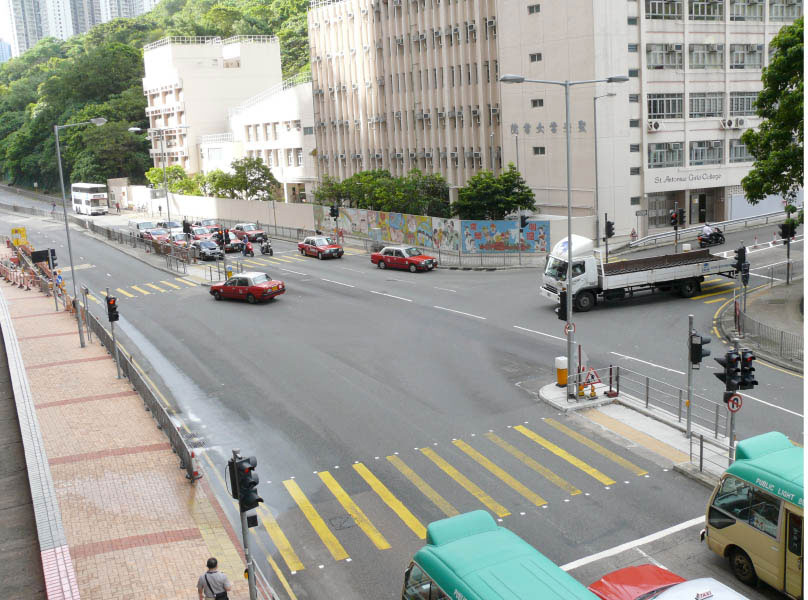 |
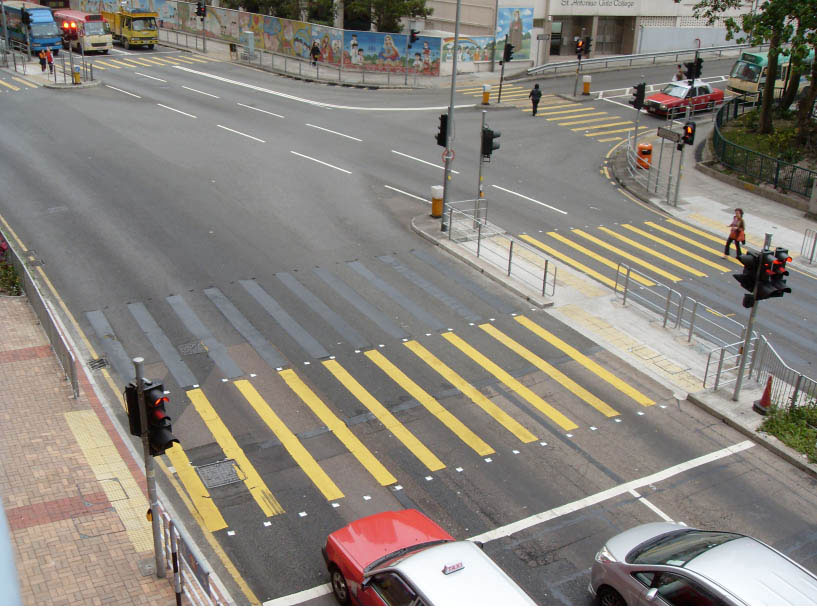 |
|
| Pedestrians do not face oncoming traffic when traversing the central island of the original staggered crossing. |
After reversing the staggered crossing, pedestrians face oncoming traffic when traversing the central island and can more conveniently observe vehicles. | |
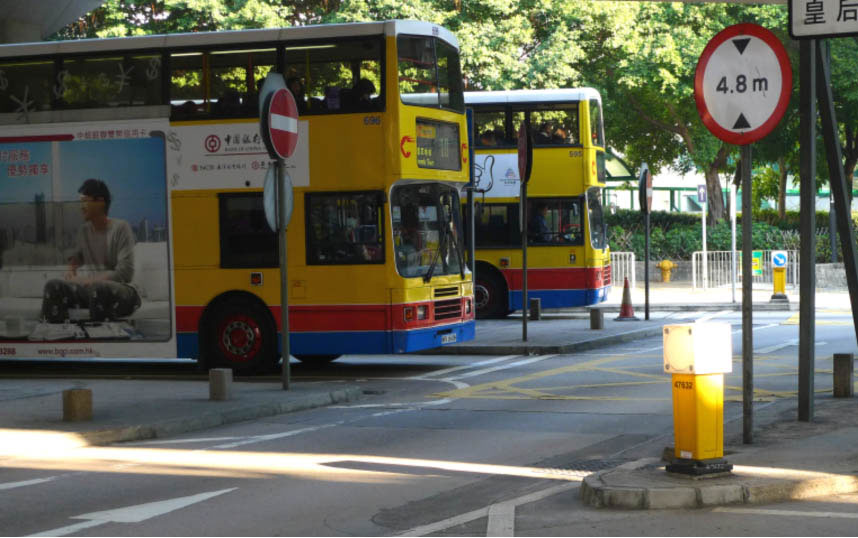 |
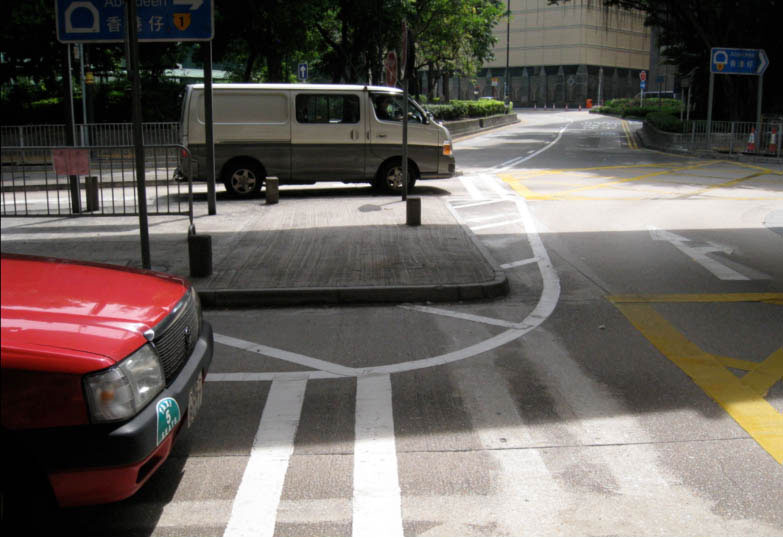 |
|
| At the Leighton Road and Morrison Hill Road junction, the sightline of drivers waiting at the second side road was blocked by vehicles waiting at the first side road. | After moving back the stop line of the first side road, the sight line of drivers at the second side road was improved. Drivers can now more easily observe oncoming traffic before emerging. |
The Use of Technology
The Transport Department is making use of technology to enhance road safety. For example, traffic signals are installed at about 1,800 road junctions to safely regulate and control vehicular and pedestrian traffic, of which 155 have been installed with red light cameras to deter drivers from jumping red lights. In addition, 20 speed enforcement cameras are rotated between 120 housings installed at strategic locations along highways to deter speeding.
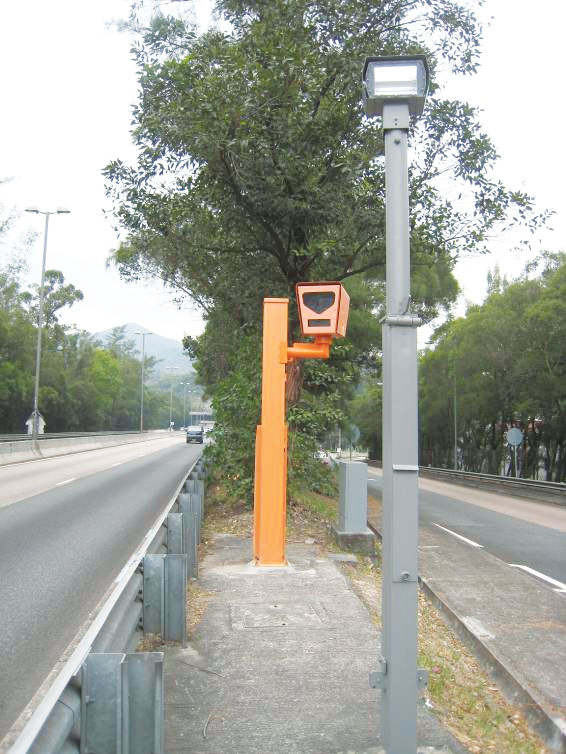 |
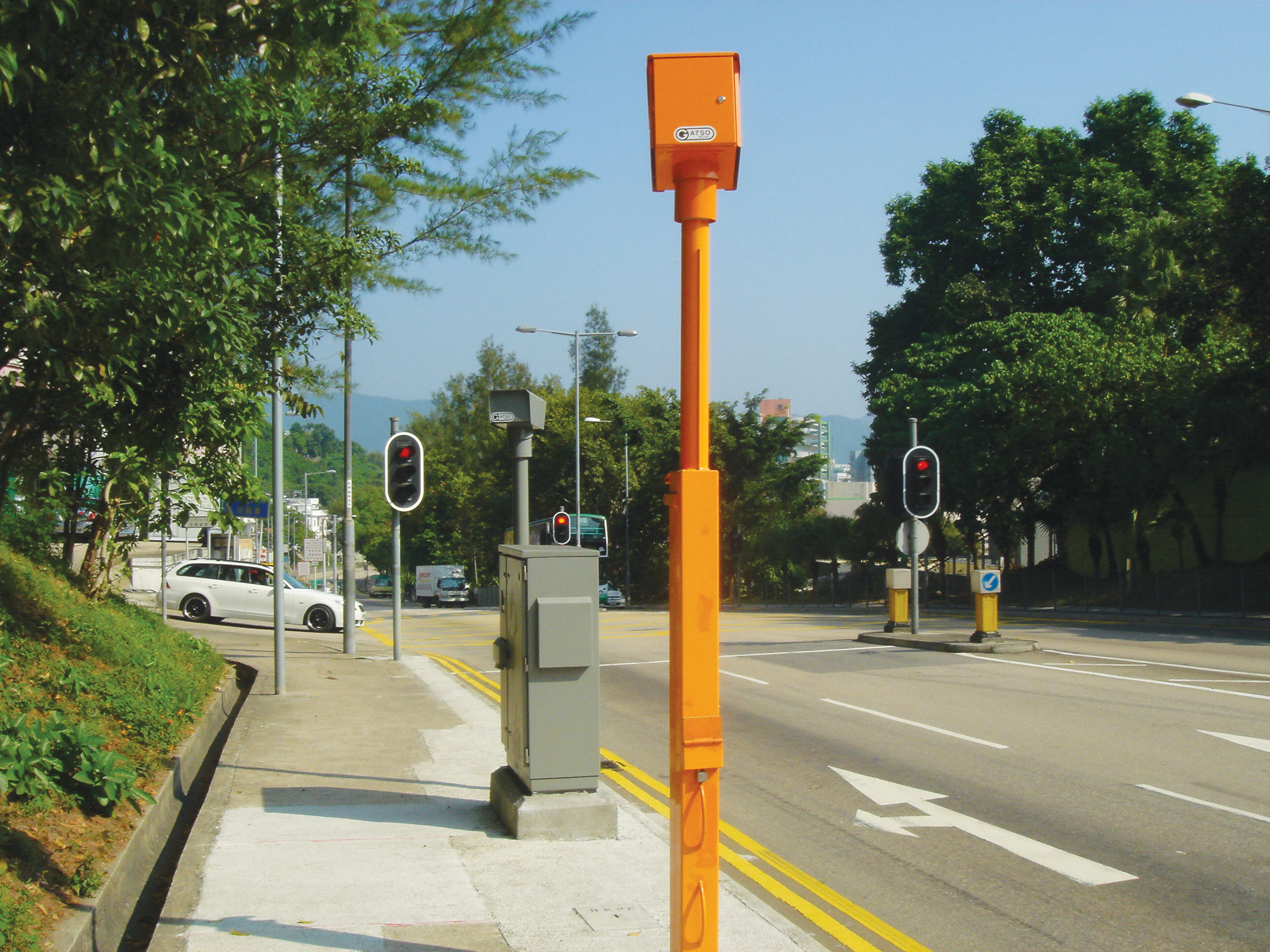 |
|
| Speed Enforcement Camera | Red Light Camera |
Engineering Measures
There are a number of fixed objects, such as bridge columns, support gantries of directional signs and ends of barriers, installed on expressways. Barrier fences are installed near fixed objects to reduce the severity of damage to vehicles and injuries to drivers and passengers during collisions. At locations where the fixed objects cannot be shielded by barrier fences, such as the ends of barrier fences, crash cushions are installed.
The major significance of a crash cushion is its ability to absorb the kinetic energy of a vehicle during collision, thus quickly decelerating an errant vehicle to a stationary condition within a short time and distance.
Crash cushions have proved effective in absorbing impact energy, reducing casualties in crashes during traffic accidents, and reducing the severity of injuries to occupants of vehicles crashing into fixed objects. As at the end of 2013, Highways Department had installed over 200 crash cushions in Hong Kong. Highways Department will continue to install crash cushions as necessary.
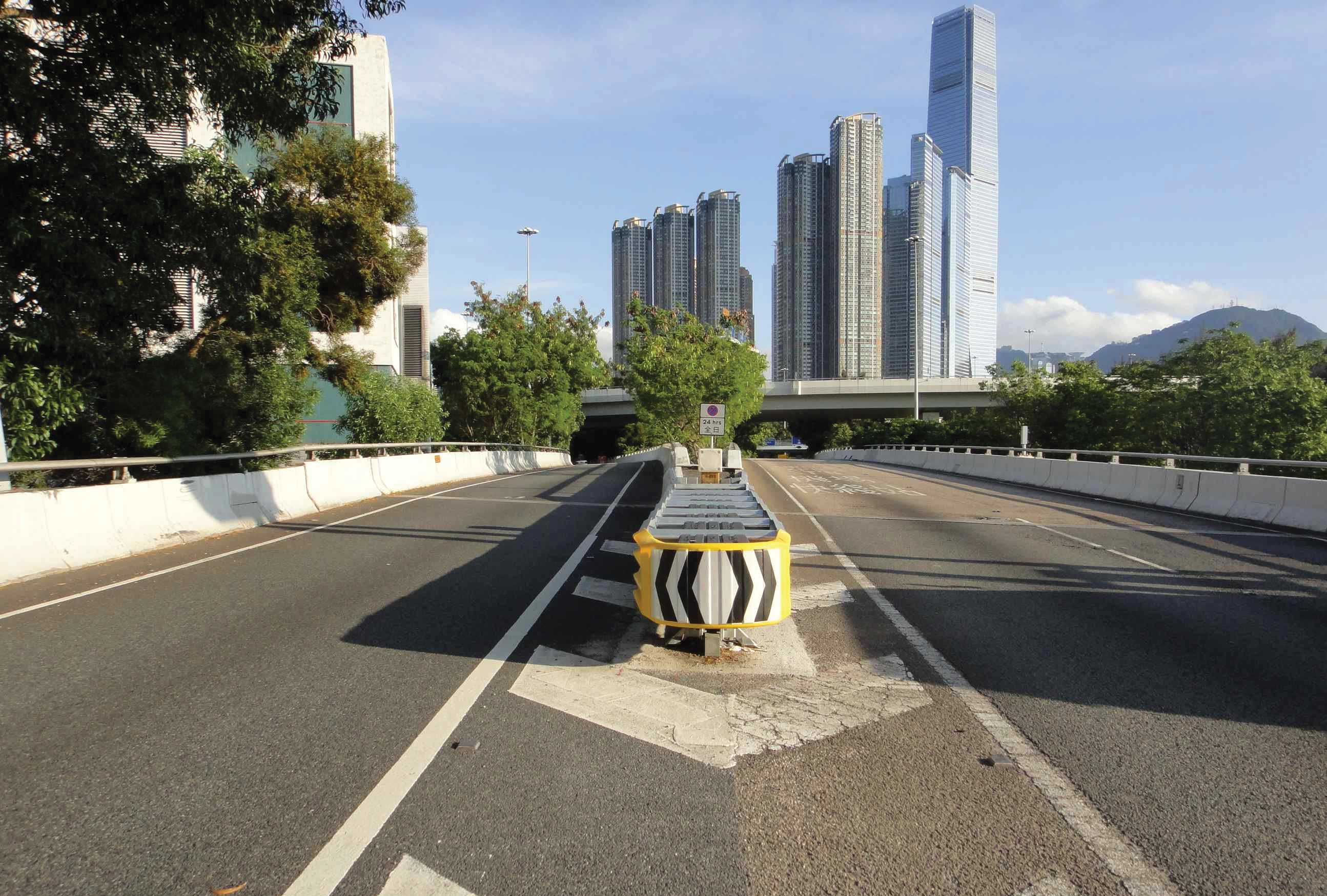 |
| Crash cushion |
Vehicle Examination
All vehicles registered in Hong Kong are required to undergo type approval and / or pre-registration examination to ensure they meet requirements stipulated in the Road Traffic Ordinance.
All commercial vehicles, including goods vehicles, buses, light buses, taxis and trailers, are required to pass a pre-registration examination to ensure roadworthiness. All private cars six years old or older are also required to pass an annual examination. Vehicle owners have the responsibility to properly maintain their vehicles to ensure roadworthiness.
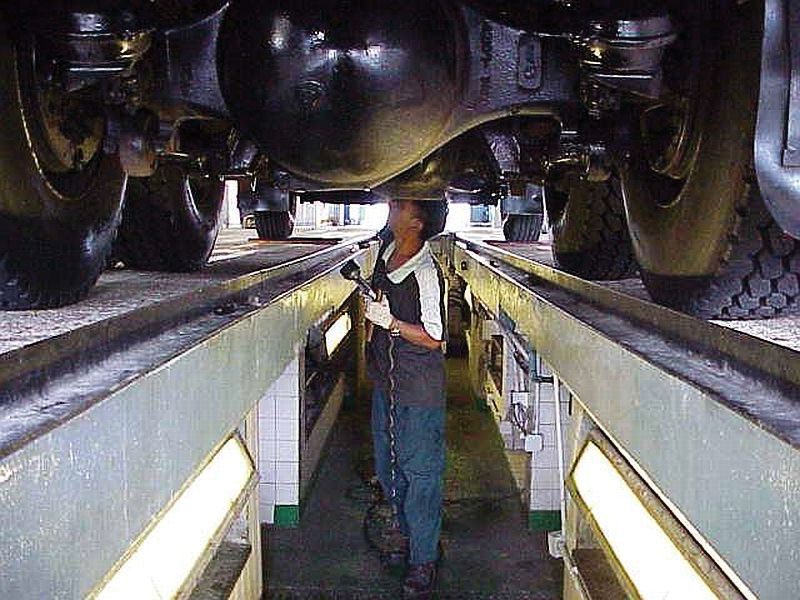 |


